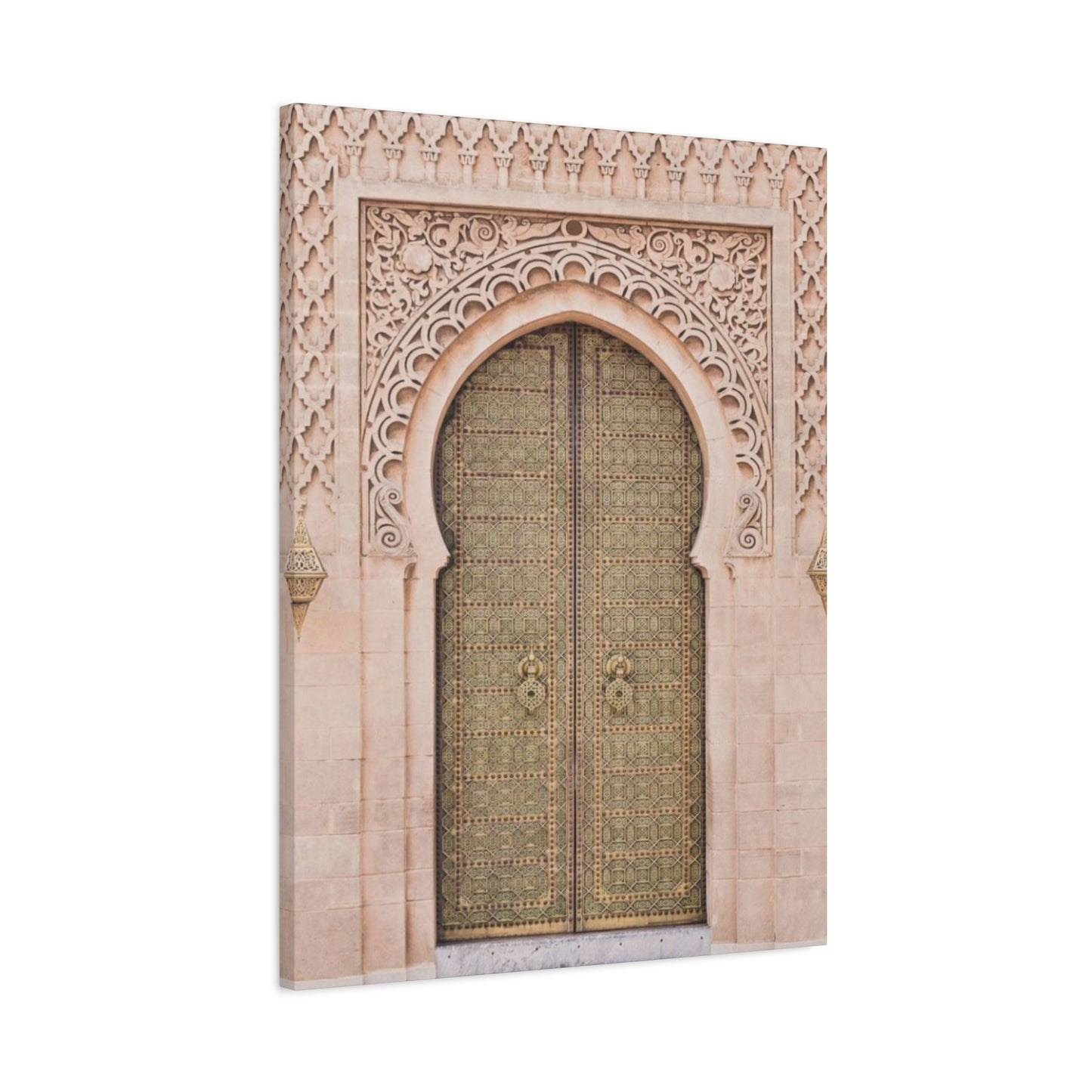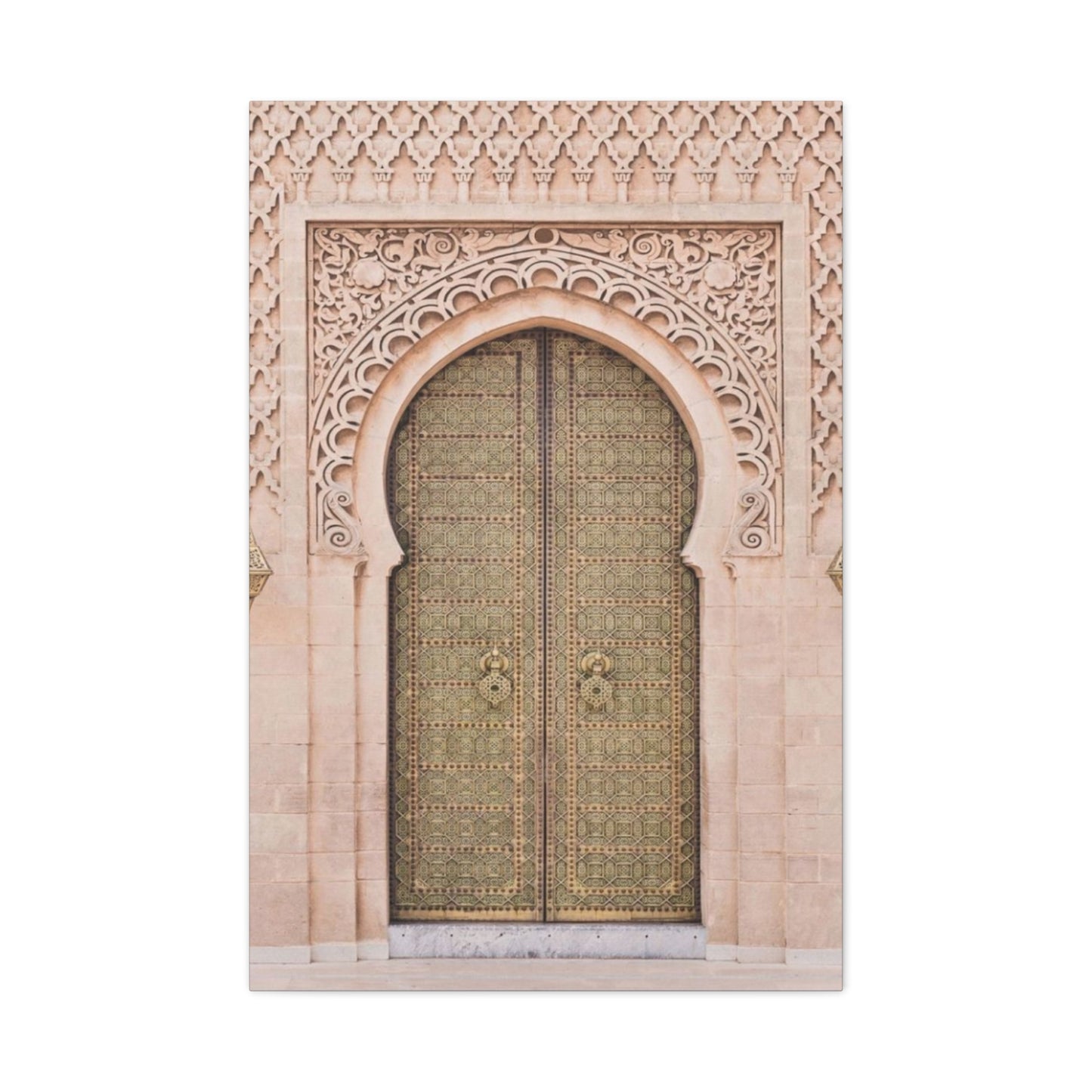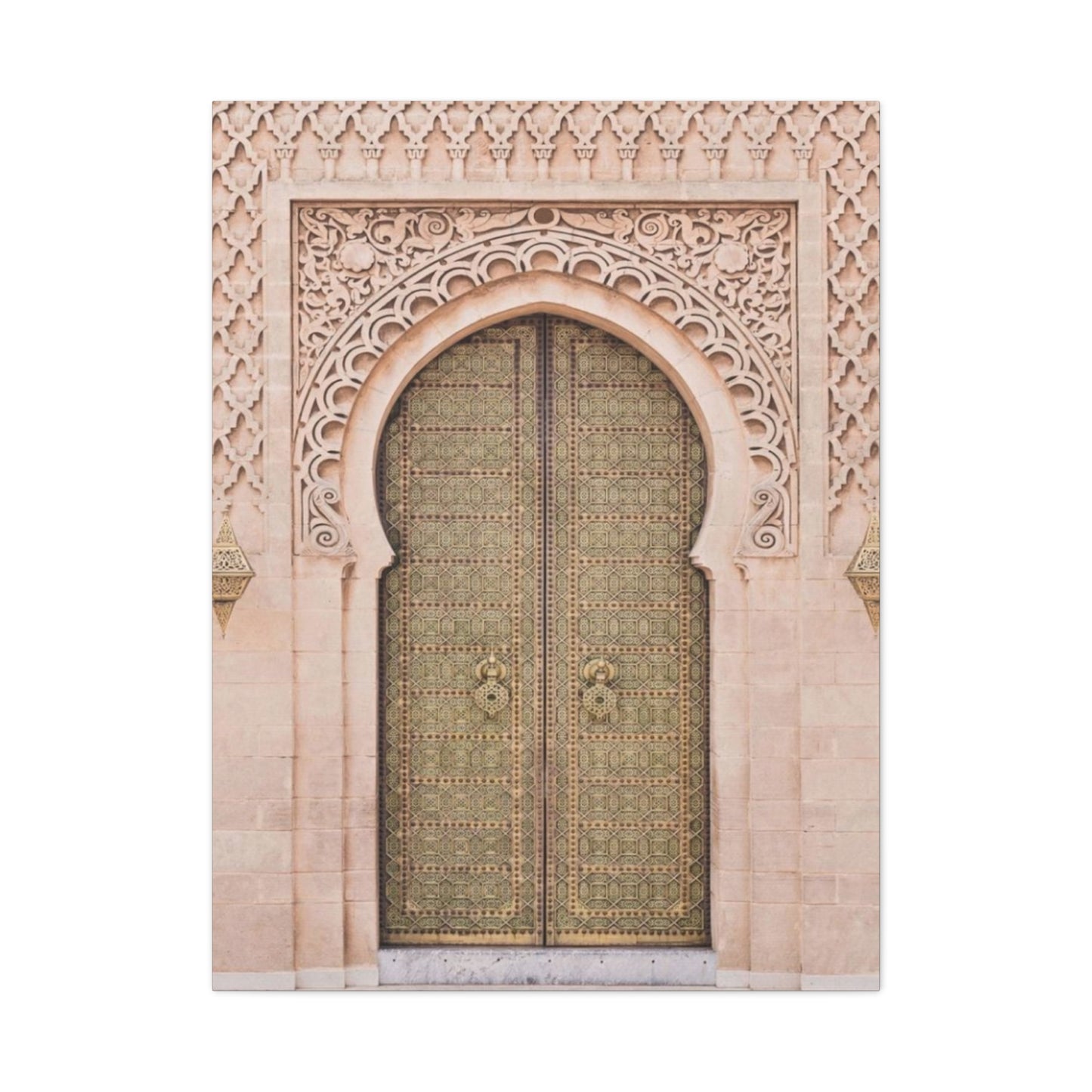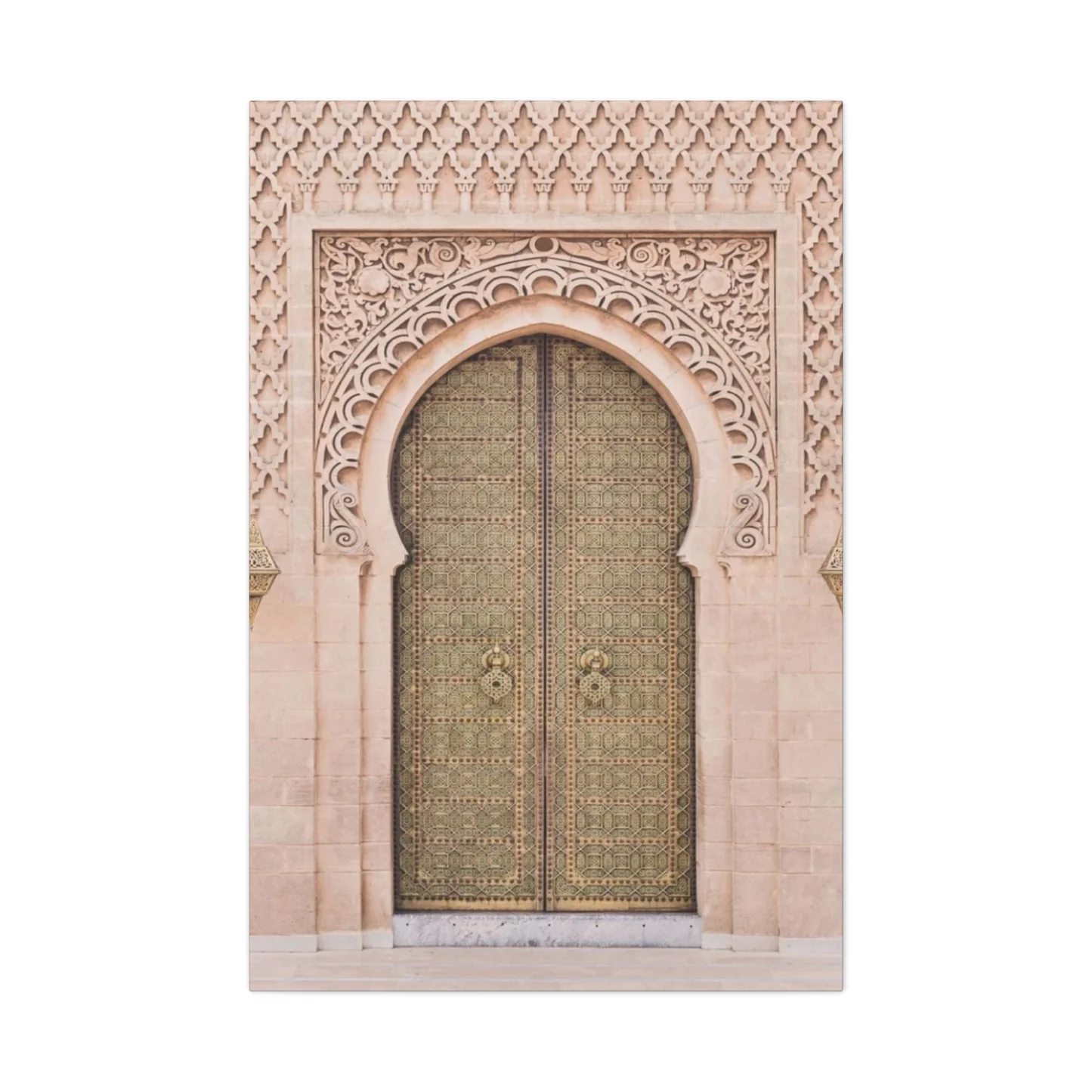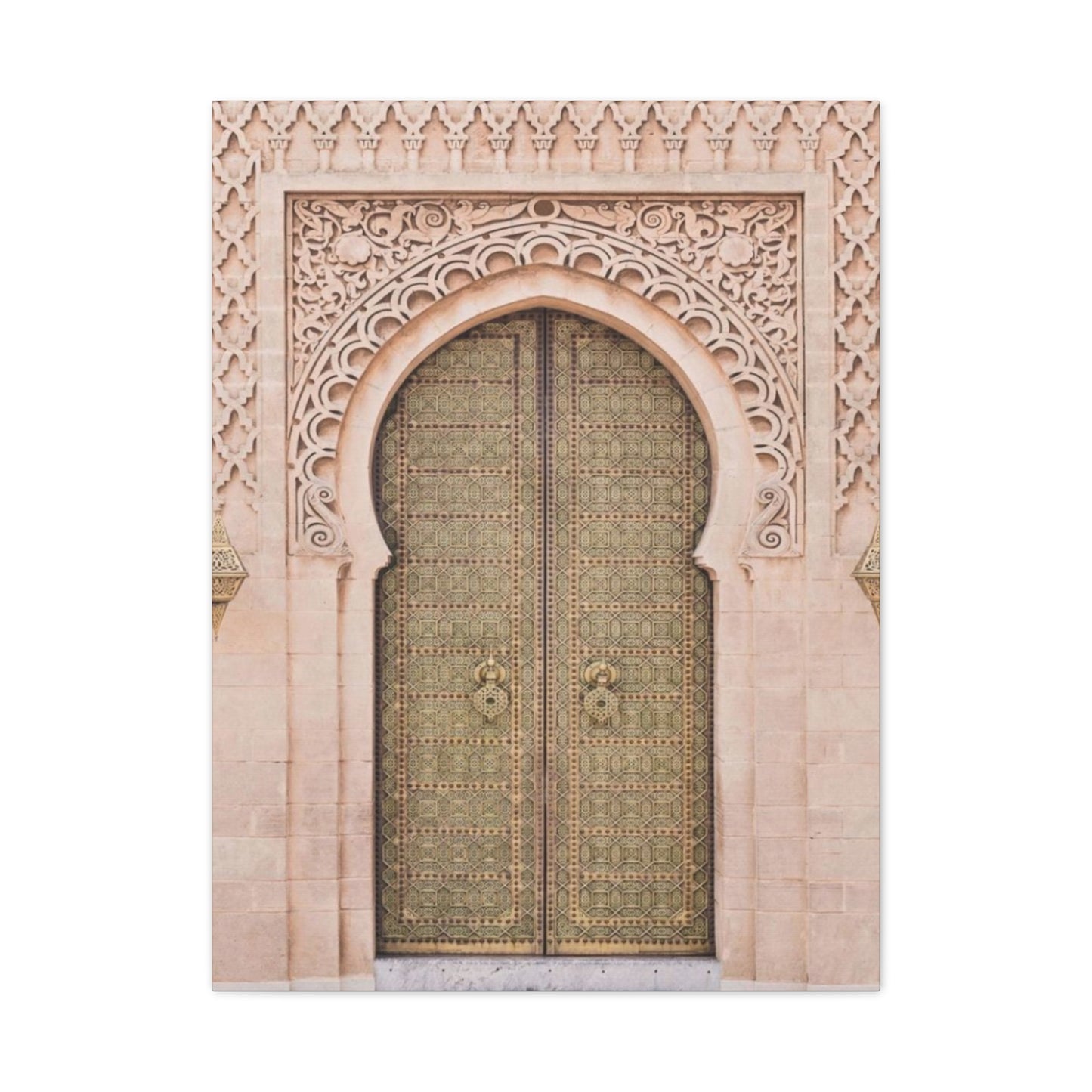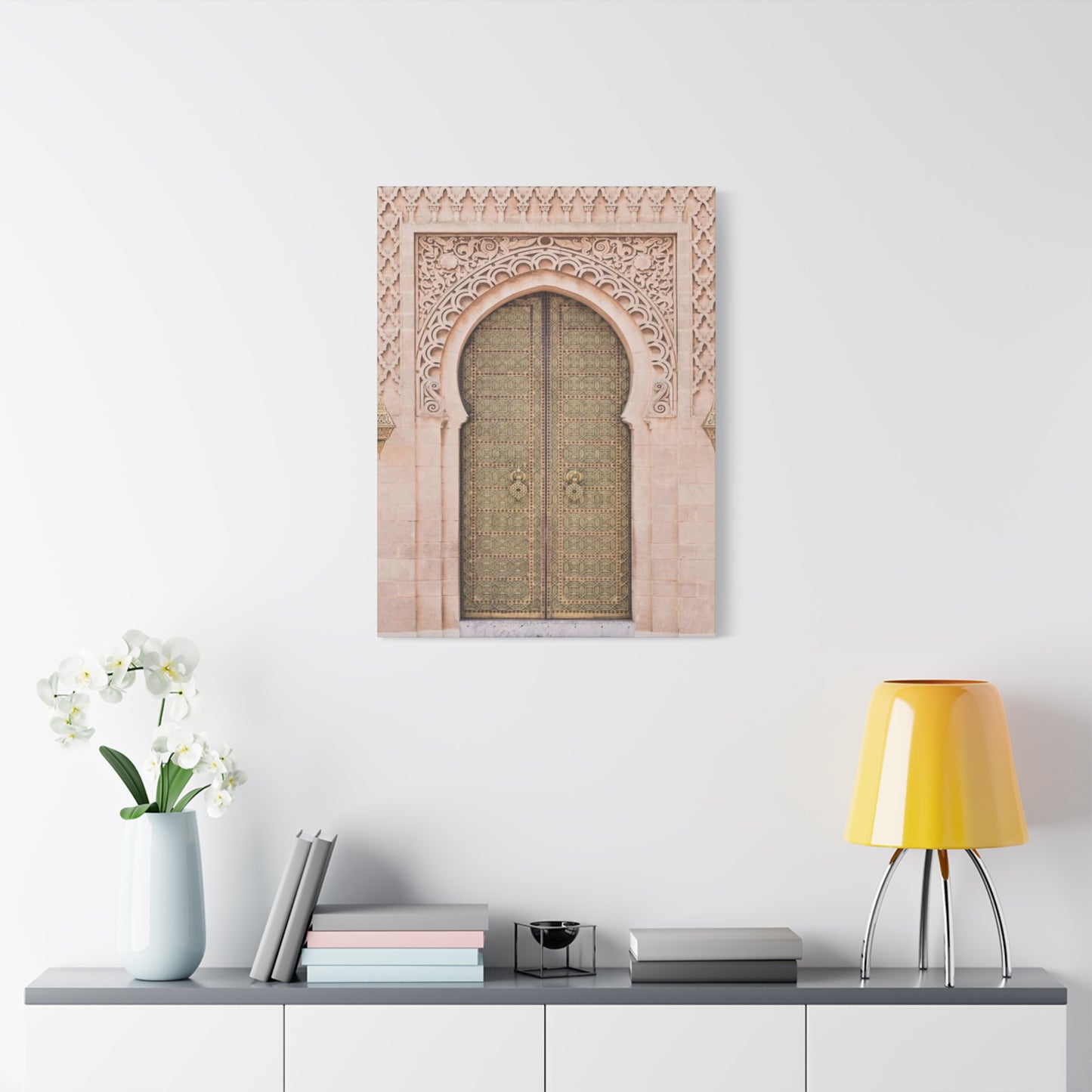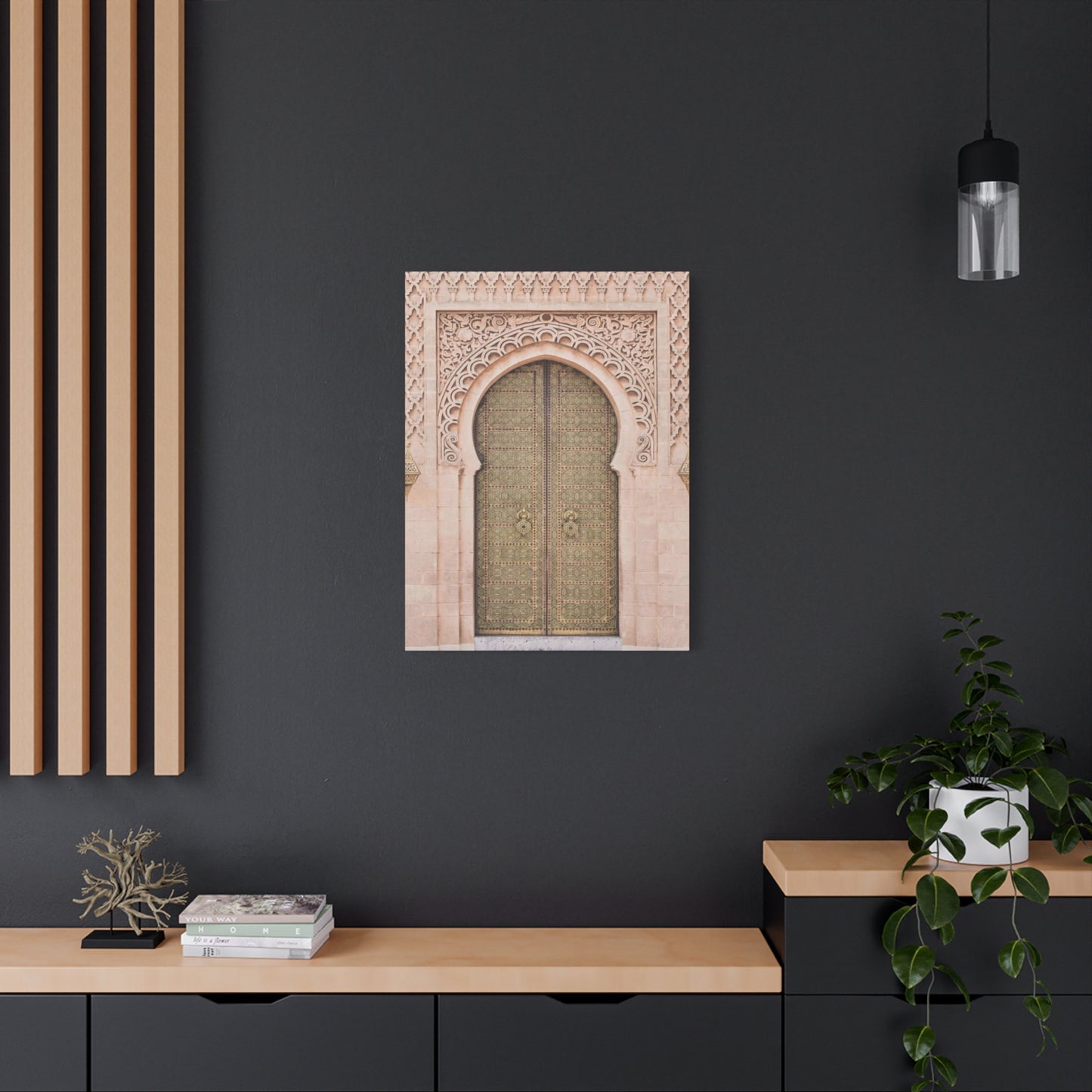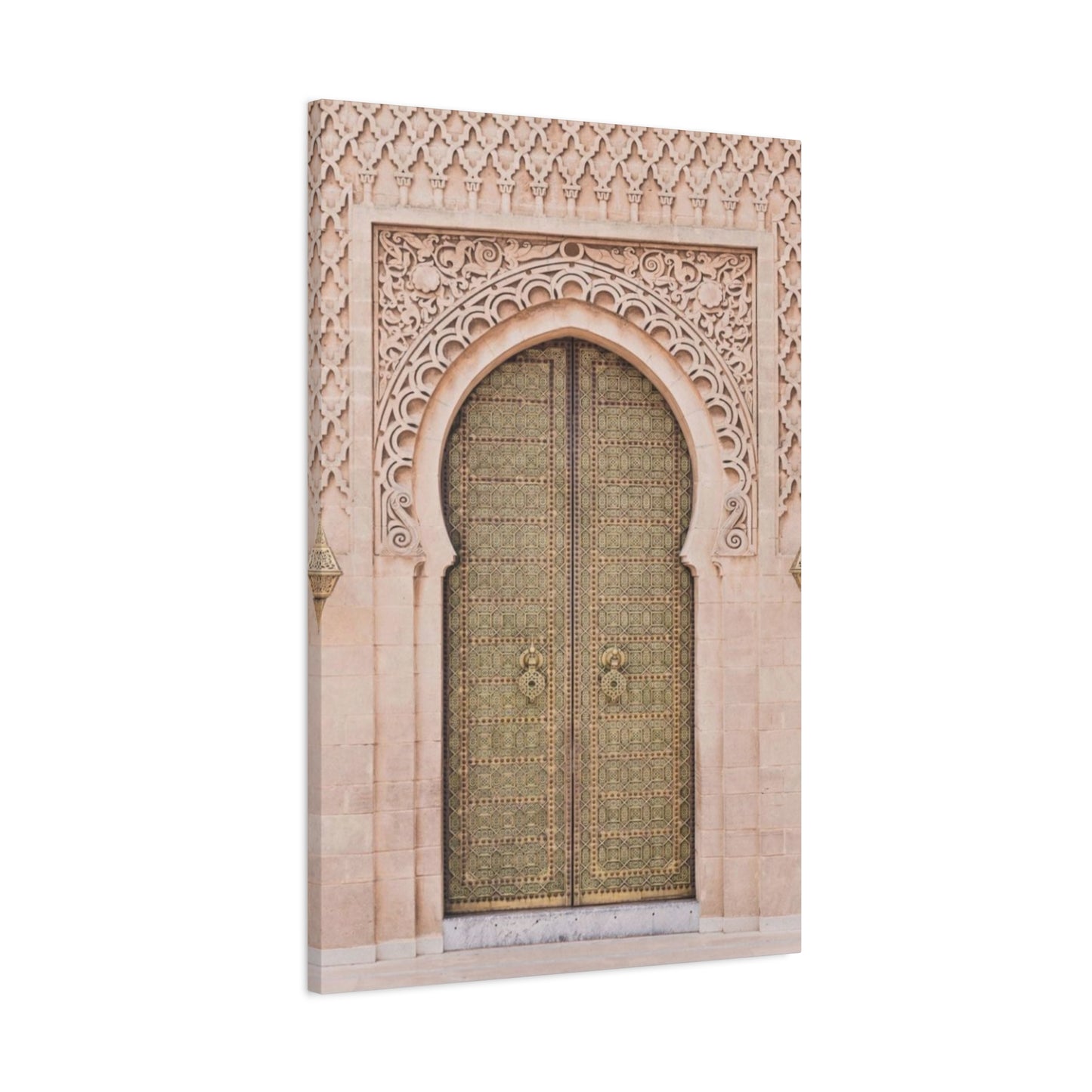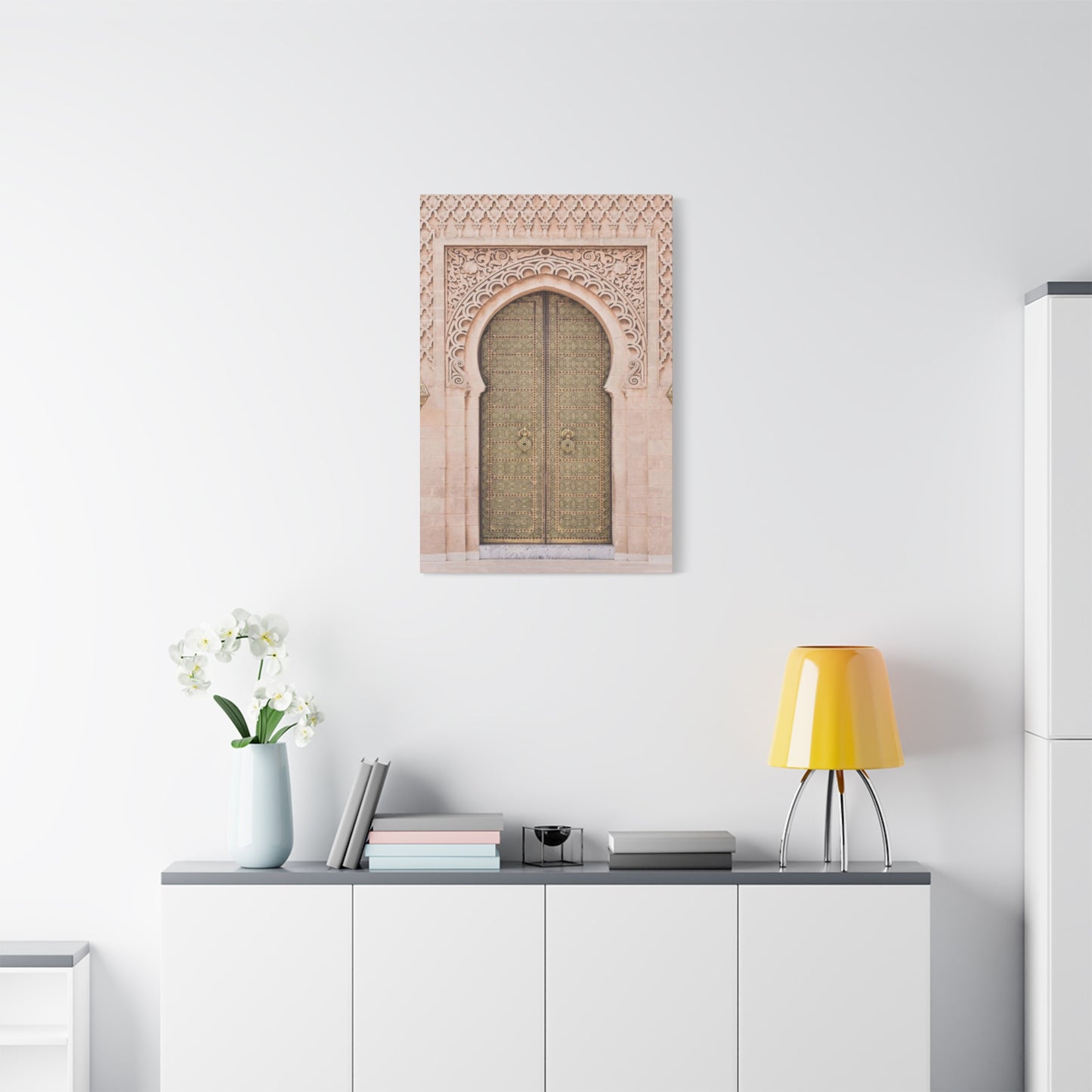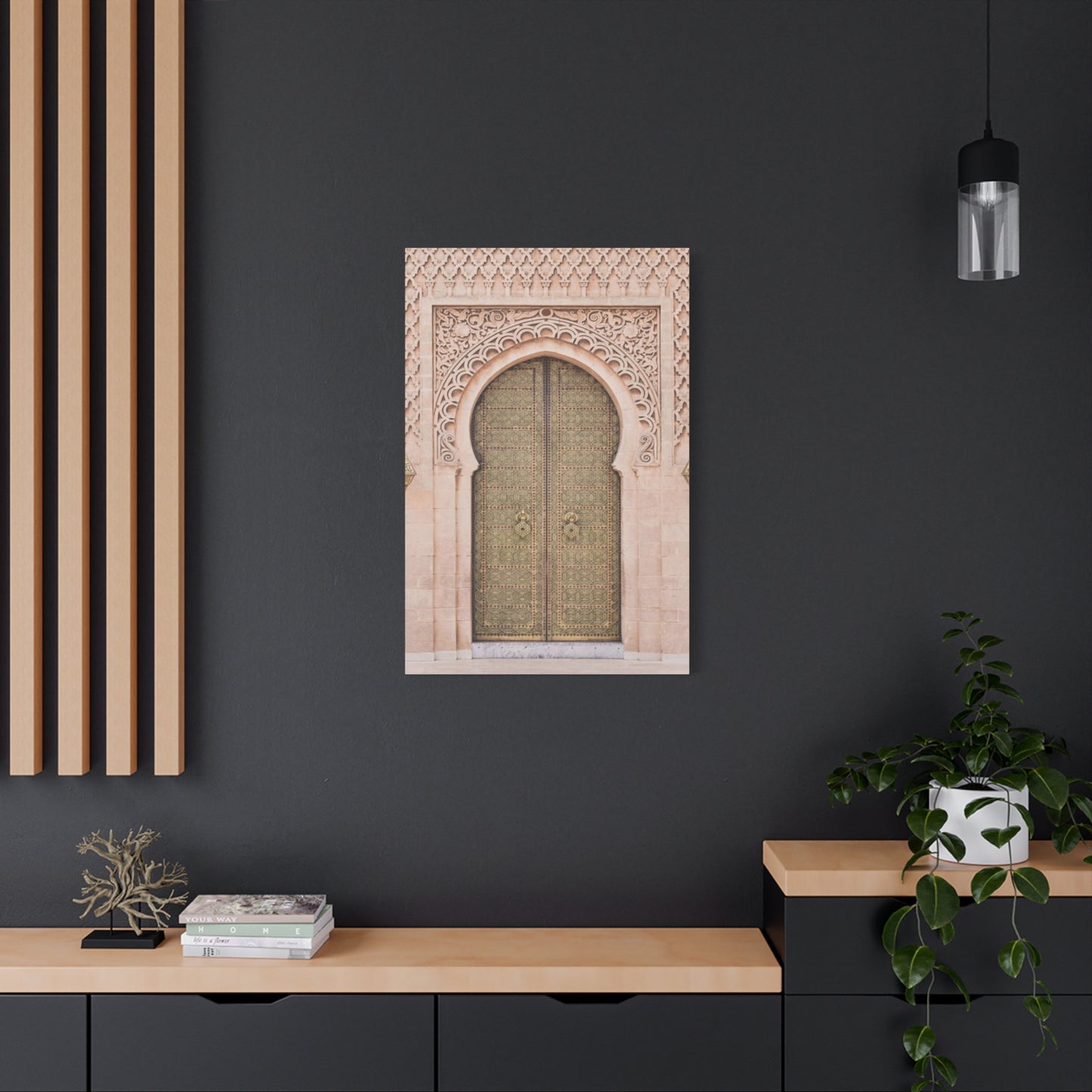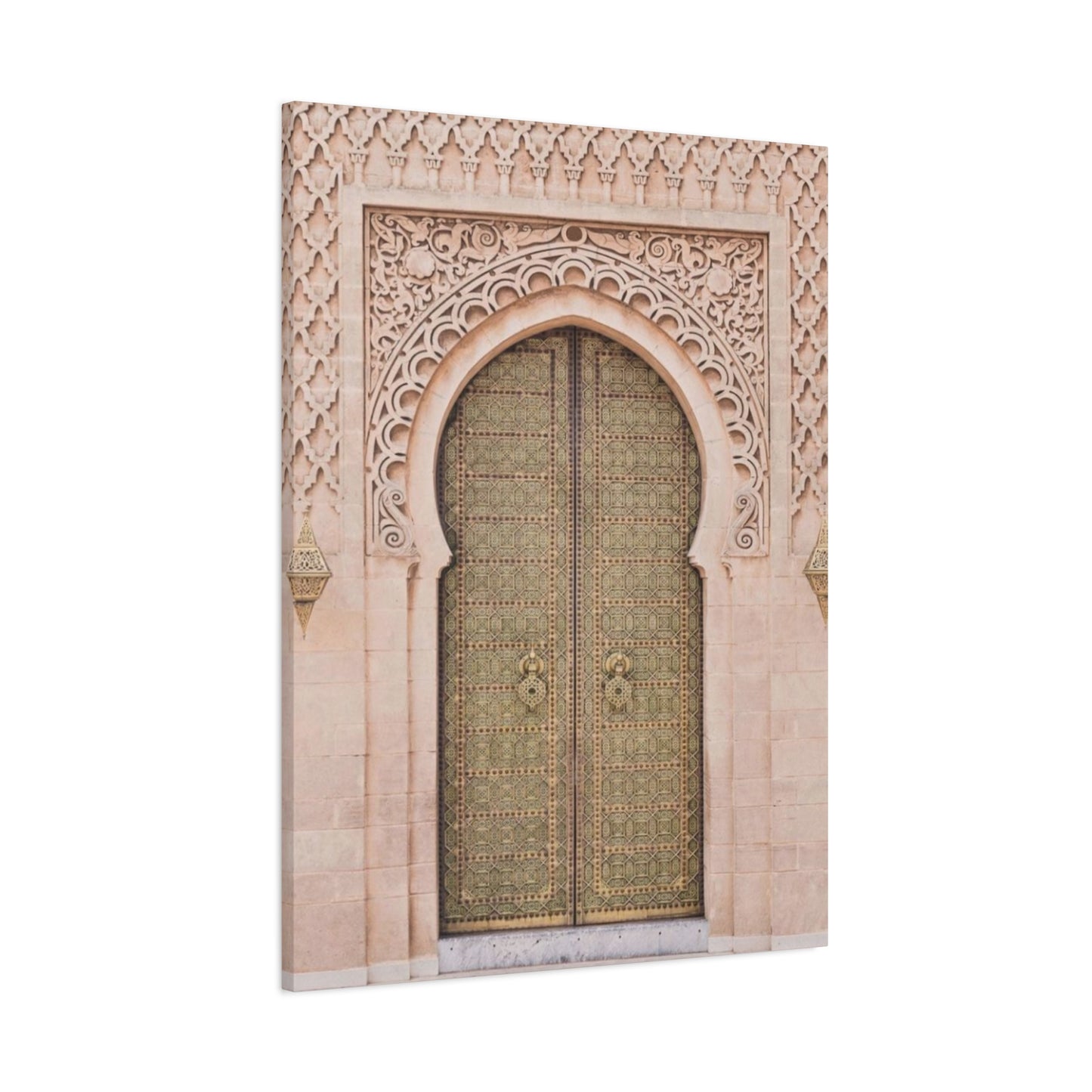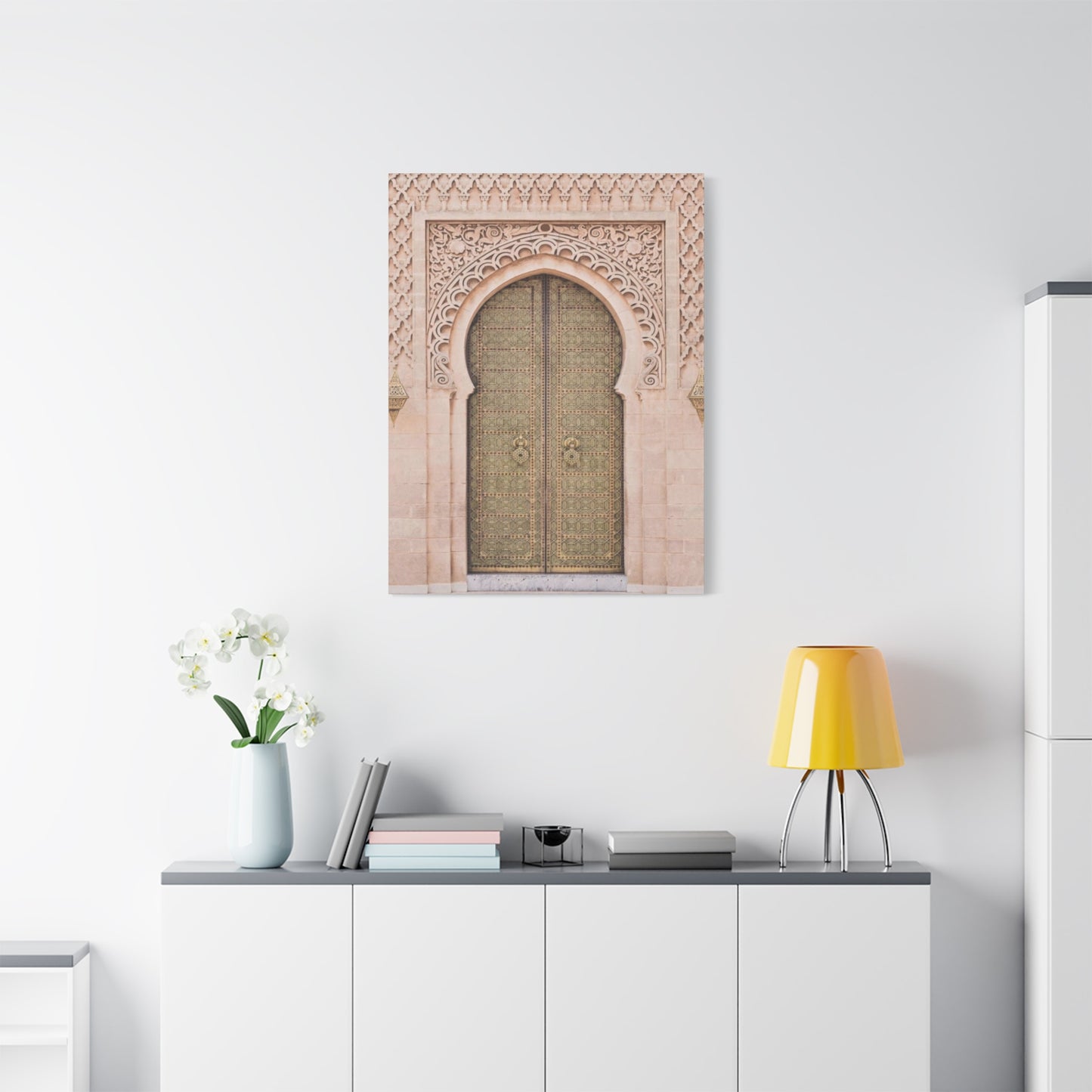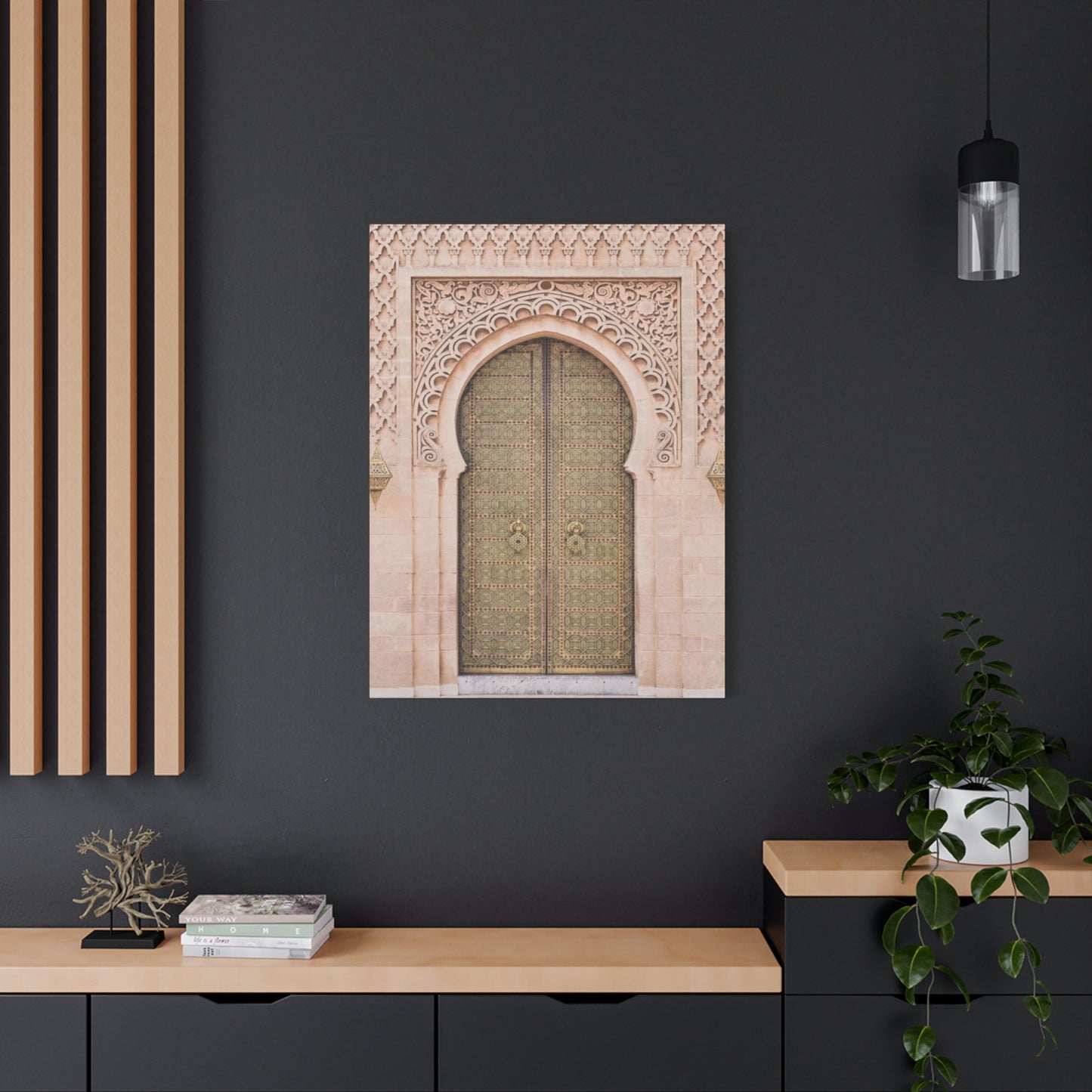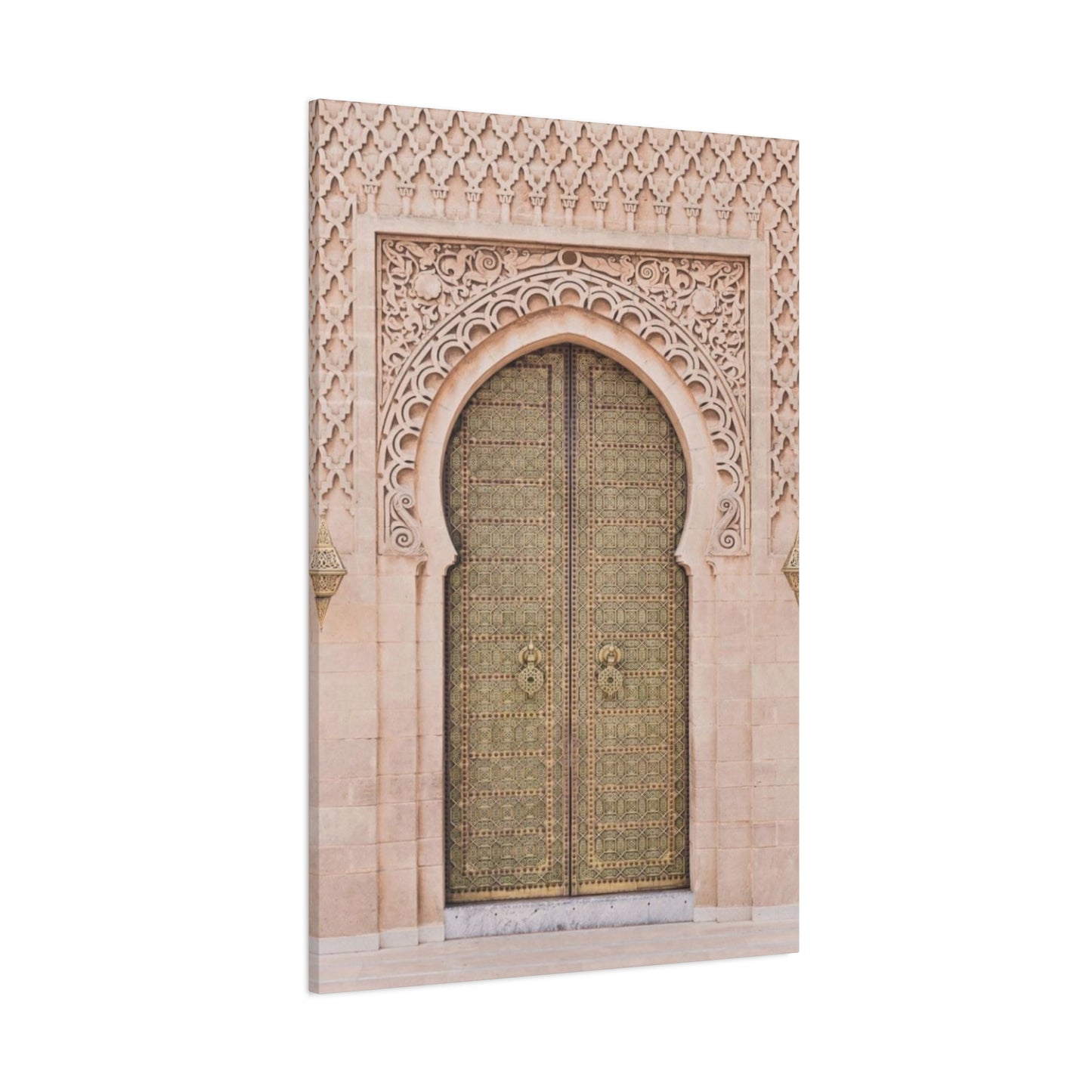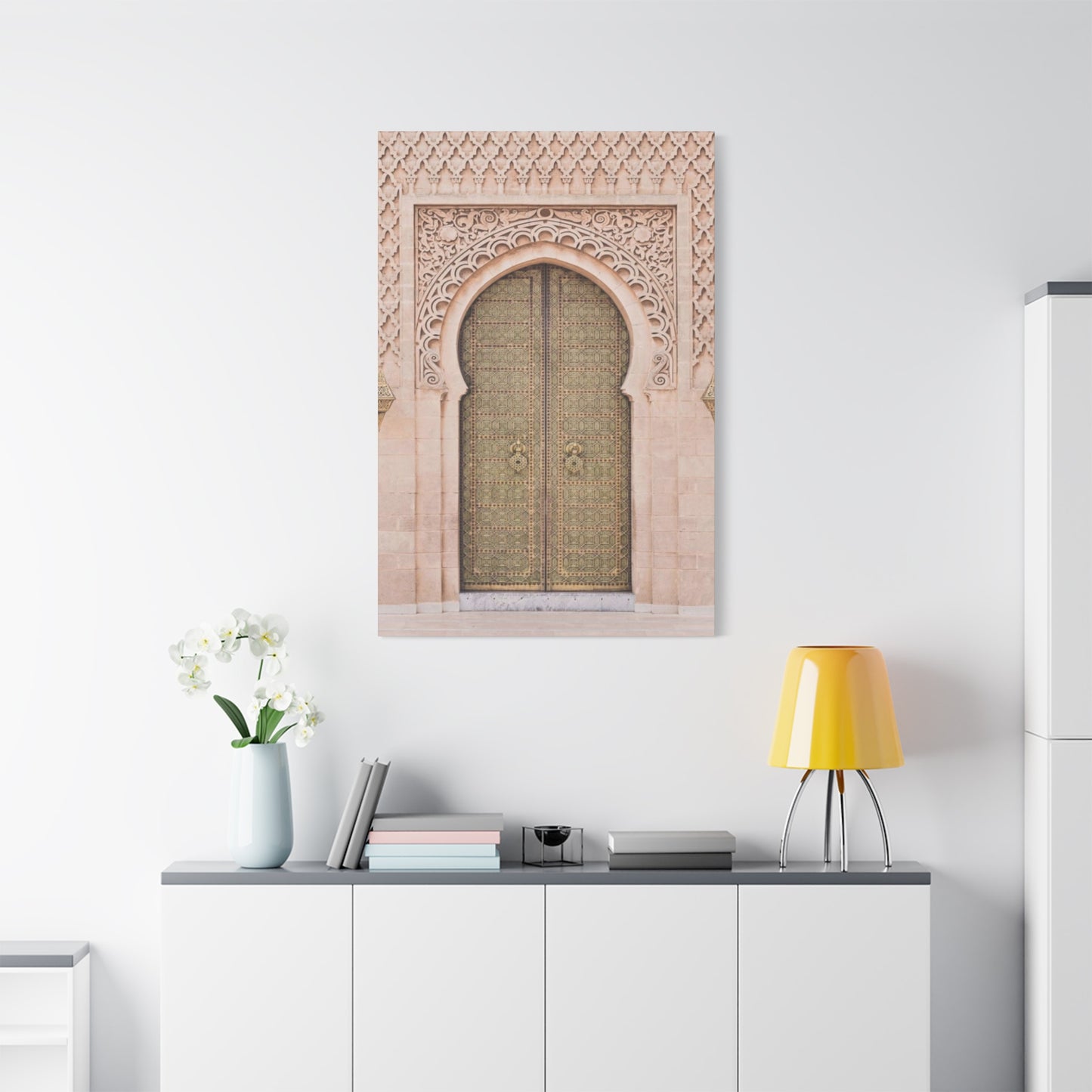Doors to the Desert: Moroccan Entry Gates and Wall Art with a Contemporary Pulse
Moroccan architectural heritage represents one of the most captivating and enduring design traditions in the world. The intricate beauty of Moroccan entry gates combined with stunning wall art creates an enchanting atmosphere that has inspired architects, designers, and homeowners across the globe. These magnificent structures serve not merely as functional barriers but as artistic statements that reflect centuries of cultural evolution, craftsmanship, and spiritual significance.
The fusion of traditional Moroccan design elements with contemporary architectural needs has resulted in a renaissance of interest in these magnificent entrance features. From the bustling medinas of Marrakech to modern residential developments in cosmopolitan cities, Moroccan-inspired entry gates adorned with complementary wall art continue to captivate and inspire those who appreciate authentic craftsmanship and timeless beauty.
The appeal of Moroccan entry gates lies not only in their visual impact but also in their rich cultural narrative. Each element, from the geometric patterns to the choice of materials, tells a story deeply rooted in Islamic art, Berber traditions, and centuries of cross-cultural exchange along ancient trade routes. When combined with carefully selected wall art, these gates create entrance experiences that transport visitors into a realm of exotic beauty and sophisticated artistry.
Modern interpretations of Moroccan gate designs have evolved to incorporate contemporary materials and construction techniques while maintaining the essential character and spiritual essence of traditional craftsmanship. This evolution has made Moroccan-inspired entrances accessible to a broader audience, allowing homeowners worldwide to incorporate these stunning design elements into their properties regardless of architectural style or geographical location.
The relationship between Moroccan gates and accompanying wall art represents a holistic approach to architectural design that considers every element of the entrance experience. From the initial visual impact created by intricate metalwork to the subtle interplay of light and shadow across carved surfaces, these design elements work together to create environments that are both functional and deeply aesthetic.
Contemporary applications of Moroccan design principles have demonstrated remarkable versatility, adapting to various architectural contexts while maintaining their essential character. Whether integrated into Mediterranean-style villas, modern minimalist homes, or traditional courtyard houses, Moroccan entry gates and wall art continue to provide a sense of mystery, elegance, and cultural richness that few other design traditions can match.
The craftsmanship required to create authentic Moroccan entry gates represents a tradition passed down through generations of skilled artisans. These master craftspeople have maintained techniques dating back centuries, ensuring that each piece created today carries forward the same attention to detail and spiritual significance that characterized the great architectural achievements of medieval Morocco.
Understanding the cultural and artistic significance of Moroccan entry gates and wall art requires appreciation for the complex interplay of influences that shaped this unique aesthetic tradition. From the geometric precision inspired by Islamic mathematical concepts to the organic forms drawn from nature and Berber symbolism, these design elements represent a sophisticated synthesis of diverse cultural streams.
The materials traditionally used in Moroccan gate construction, including wrought iron, carved wood, natural stone, and decorative tiles, each contribute specific qualities to the overall aesthetic experience. The patina that develops on metal surfaces over time, the weathering patterns that emerge on natural stone, and the subtle color variations in handmade tiles all contribute to the authentic character that makes these architectural features so compelling.
Modern homeowners seeking to incorporate Moroccan design elements into their properties have access to an unprecedented range of options, from authentic antique pieces to contemporary interpretations created by skilled craftspeople working within traditional frameworks. This accessibility has contributed to a growing appreciation for the artistry and cultural significance of Moroccan architectural design.
The integration of lighting elements with Moroccan wall art and gate designs creates opportunities for dramatic visual effects that enhance the entrance experience during evening hours. Carefully planned illumination can highlight specific design details, create attractive shadow patterns, and establish a welcoming atmosphere that extends the visual impact of these architectural features beyond daylight hours.
Contemporary landscape design has embraced Moroccan-inspired elements as a means of creating outdoor environments that reflect the sophistication and cultural richness associated with traditional Moroccan architecture. The combination of entry gates with complementary wall art, appropriate plantings, and carefully selected hardscape materials can create entrance sequences that rival the most celebrated examples of traditional Moroccan design.
Breathtaking Moroccan Entry Gate Concepts
The artistry of Moroccan entry gate design represents a pinnacle of architectural craftsmanship that has evolved over more than a millennium. These magnificent structures serve as portals between the public realm and private sanctuary, incorporating complex symbolic meanings alongside practical functionality. The most compelling Moroccan gate designs demonstrate masterful integration of geometric patterns, calligraphic elements, and naturalistic motifs that create visual narratives rich in cultural significance.
Traditional Moroccan gates typically feature elaborate ironwork characterized by flowing curves and intricate geometric patterns that reflect Islamic artistic principles. These designs often incorporate the eight-pointed star, known as the Khatam, which symbolizes regeneration and renewal in Islamic culture. The repetition of geometric forms creates rhythmic patterns that draw the eye inward, inviting contemplation and reflection while maintaining the essential function of defining boundaries and controlling access.
The scale of Moroccan entry gates varies considerably depending on their intended application and the architectural context within which they are placed. Grand ceremonial gates designed for palaces and important public buildings can reach impressive heights and incorporate multiple layers of decorative elements, while residential applications typically feature more intimate proportions that nonetheless maintain the essential character and artistic sophistication of their monumental counterparts.
Color plays a crucial role in Moroccan gate design, with traditional applications favoring deep blues, rich greens, warm earth tones, and metallic accents that complement the natural patina of aged iron and bronze. These color palettes reflect the natural environment of Morocco, from the deep blue of the Atlantic sky to the warm ochre of desert sands and the verdant green of oasis gardens.
Contemporary interpretations of Moroccan gate designs have expanded the traditional color palette to include more neutral tones that complement modern architectural styles while maintaining the essential character of traditional Moroccan aesthetics. These adaptations demonstrate the versatility of Moroccan design principles and their ability to enhance diverse architectural contexts without compromising their cultural authenticity.
The construction techniques employed in creating authentic Moroccan gates represent centuries of refinement and innovation within traditional craft frameworks. Master metalworkers employ time-honored methods of forging, shaping, and joining that produce joints of exceptional strength and durability while maintaining the fluid, organic quality that characterizes the finest examples of Moroccan ironwork.
Surface treatments applied to Moroccan gates serve both protective and aesthetic functions, with traditional approaches employing natural oils, waxes, and patinas that enhance the metal's natural characteristics while providing protection against environmental elements. These surface treatments develop and change over time, contributing to the authentic aged appearance that makes antique Moroccan gates so highly prized by collectors and designers.
The integration of carved wooden elements within Moroccan gate designs adds textural richness and provides opportunities for incorporating additional decorative motifs. Traditional woodworking techniques produce panels featuring intricate geometric patterns, stylized floral motifs, and calligraphic elements that complement the metalwork while adding warmth and organic character to the overall composition.
Hardware elements, including hinges, latches, and decorative studs, receive the same careful attention to design and craftsmanship as the primary structural components of Moroccan gates. These functional elements are transformed into decorative features that contribute to the overall aesthetic impact while maintaining their practical utility through thoughtful engineering and superior materials.
The positioning and orientation of Moroccan entry gates within their architectural setting requires careful consideration of sight lines, circulation patterns, and the relationship between interior and exterior environments. Skilled designers understand how to maximize the visual impact of these magnificent structures while ensuring that they function effectively within their intended context.
Contemporary applications of Moroccan gate design principles have embraced new materials and construction techniques that expand creative possibilities while maintaining respect for traditional aesthetic values. Modern materials such as powder-coated aluminum, stainless steel, and composite materials offer improved durability and reduced maintenance requirements without sacrificing the visual richness and cultural authenticity that define authentic Moroccan design.
The documentation and preservation of traditional Moroccan gate designs has become increasingly important as urbanization and modernization threaten many historic examples. Contemporary craftspeople and designers work to maintain traditional techniques while adapting them to current needs and materials, ensuring that this magnificent design tradition continues to evolve and inspire future generations.
Moroccan Wall Art and Gate Integration
The harmonious integration of wall art with Moroccan entry gates represents one of the most sophisticated approaches to creating cohesive architectural environments. This design philosophy recognizes that the entrance experience extends beyond the gate itself to encompass all visual elements within the immediate vicinity, creating opportunities for artistic expression that enhance and amplify the impact of the primary architectural features.
Traditional Moroccan wall art encompasses a diverse range of techniques and materials, from intricate tile mosaics known as zellige to carved plaster reliefs called tadelakt, painted geometric patterns, and applied metalwork elements. Each of these techniques offers unique aesthetic qualities that can be coordinated with gate designs to create unified visual experiences that reflect the sophisticated artistic sensibilities of Moroccan culture.
The relationship between wall surfaces and gate elements requires careful consideration of scale, proportion, and visual hierarchy to ensure that individual components work together to create coherent artistic statements. Successful integration depends on understanding how different materials, textures, and patterns interact with one another and with the changing qualities of natural light throughout the day.
Color coordination between wall art and gate elements plays a crucial role in achieving visual harmony while maintaining sufficient contrast to allow individual design elements to maintain their distinct character. Traditional Moroccan color palettes provide time-tested combinations that create visually pleasing relationships while reflecting the cultural associations and symbolic meanings embedded within the broader design tradition.
The application of geometric patterns across both wall surfaces and gate elements creates opportunities for sophisticated visual relationships that demonstrate the mathematical precision underlying Moroccan decorative arts. These patterns can flow seamlessly from one surface to another, creating the illusion of continuous decorative fields that unify disparate architectural elements within a single artistic vision.
Textural contrasts between smooth tile surfaces, roughly textured stone or plaster, and the linear qualities of metalwork create visual interest and tactile richness that enhance the sensory experience of approaching and passing through Moroccan-inspired entrances. These textural relationships develop and change throughout the day as shifting light conditions reveal different aspects of surface quality and detail.
The integration of calligraphic elements within wall art compositions provides opportunities for incorporating text-based design elements that complement the abstract patterns typically featured in gate designs. Arabic calligraphy, with its flowing curves and rhythmic repetitions, creates visual bridges between different decorative elements while adding layers of meaning for those able to read and interpret the textual content.
Contemporary interpretations of traditional Moroccan wall art techniques have embraced new materials and application methods that expand creative possibilities while maintaining respect for authentic aesthetic principles. Modern ceramic tiles, composite materials, and digital printing technologies enable designers to create custom patterns and color combinations that would be difficult or impossible to achieve using traditional methods alone.
The maintenance and preservation of integrated wall art and gate systems requires understanding of how different materials age and weather over time. Successful long-term performance depends on selecting materials and surface treatments that will develop attractive patinas while maintaining structural integrity and visual coherence as environmental conditions cause gradual changes in appearance.
Lighting design plays a crucial role in revealing and enhancing the relationships between wall art and gate elements, particularly during evening hours when artificial illumination becomes the primary means of visual perception. Carefully planned lighting can highlight specific design details, create attractive shadow patterns, and establish dramatic focal points that enhance the overall entrance experience.
The seasonal variation in plant materials surrounding Moroccan-inspired entrances provides opportunities for creating dynamic relationships between architectural elements and natural features. Careful plant selection can complement and enhance the fixed decorative elements while providing seasonal interest through changing colors, textures, and forms throughout the year.
Professional installation of integrated wall art and gate systems requires coordination between multiple craft specialists, each bringing expertise in specific materials and techniques. Successful project execution depends on clear communication and careful sequencing of work to ensure that individual components are properly integrated and finished to the highest standards of quality and craftsmanship.
Classical Moroccan Gate Characteristics
The development of classical Moroccan gate design represents a remarkable synthesis of diverse cultural influences that converged over centuries of trade, conquest, and cultural exchange. These magnificent structures embody design principles that reflect Islamic geometric concepts, Berber symbolic traditions, Andalusian refinement, and the practical requirements of fortress architecture, creating a unique aesthetic tradition that continues to inspire contemporary designers and craftspeople.
Geometric precision forms the fundamental organizing principle of classical Moroccan gate design, with master craftspeople employing sophisticated mathematical relationships to create patterns that appear infinitely complex while maintaining underlying structural logic. These geometric systems derive from Islamic artistic traditions that view mathematical harmony as a reflection of divine order, imbuing decorative patterns with spiritual significance that transcends purely aesthetic considerations.
The use of repetitive patterns, or tessellations, creates visual rhythms that draw the eye inward while establishing a sense of infinite extension beyond the physical boundaries of the gate structure. These patterns typically employ a limited number of basic geometric forms that are combined and recombined according to strict mathematical rules, producing compositions of remarkable richness and sophistication despite their underlying simplicity.
Symmetry and balance play crucial roles in classical Moroccan gate design, with most compositions organized around central axes that create formal relationships between corresponding elements on either side of the gate opening. This bilateral symmetry reflects Islamic concepts of divine order while creating visually stable compositions that convey a sense of permanence and authority appropriate to significant architectural entrances.
The integration of calligraphic elements within classical gate designs provides opportunities for incorporating sacred texts, poetry, and historical inscriptions that add layers of meaning beyond pure visual decoration. Arabic calligraphy, with its flowing curves and rhythmic repetitions, creates visual bridges between geometric patterns while introducing organic qualities that soften the mathematical precision of purely geometric compositions.
Material selection in classical Moroccan gates reflects both practical considerations and symbolic associations that connect these structures to broader cultural traditions. Iron and bronze provide the strength and durability required for functional gate construction while developing attractive patinas that enhance visual richness over time. The use of these metals also connects Moroccan gates to broader Islamic traditions of metalworking that span from Spain to Central Asia.
Surface treatments applied to classical Moroccan gates serve both protective and aesthetic functions, with traditional approaches employing natural materials and time-honored techniques that enhance the metal's inherent qualities while providing protection against environmental degradation. These surface treatments are designed to develop and improve with age, creating the authentic patinas that characterize the finest examples of antique Moroccan metalwork.
The proportional relationships governing classical Moroccan gate design reflect sophisticated understanding of visual perception and the psychological effects of architectural scale. Gate openings are typically sized to create appropriate relationships between human figures and architectural elements, while decorative details are scaled to remain visually coherent at the distances from which they are typically viewed.
Functional hardware elements, including hinges, latches, and locking mechanisms, are seamlessly integrated within the overall decorative scheme of classical Moroccan gates. These practical components are transformed into decorative features through careful design and expert craftsmanship, demonstrating the Moroccan tradition of finding beauty in utility and elevating functional elements to the level of high art.
The relationship between classical Moroccan gates and their architectural settings reflects sophisticated understanding of how individual elements contribute to larger environmental experiences. These gates are designed to complement and enhance their surroundings while maintaining their own distinct character and visual impact, creating entrance sequences that build anticipation and establish appropriate moods for the environments beyond.
Symbolic content embedded within classical Moroccan gate designs draws from multiple cultural traditions and religious beliefs, creating rich interpretive possibilities for those familiar with traditional iconography. Common symbols include representations of paradise gardens, protective talismans, and abstract patterns that evoke natural phenomena such as flowing water, growing vegetation, and celestial movements.
The documentation and analysis of classical Moroccan gate designs has revealed sophisticated design systems that governed the creation of these magnificent structures. Understanding these underlying principles enables contemporary designers and craftspeople to create new works that maintain authentic connections to traditional aesthetic values while addressing current functional requirements and material constraints.
Contemporary Gates Featuring Moroccan Art
The evolution of Moroccan-inspired gate design in contemporary contexts represents a fascinating dialogue between traditional aesthetic principles and modern architectural requirements. Today's designers and craftspeople have developed innovative approaches that honor the cultural heritage and artistic sophistication of classical Moroccan design while incorporating contemporary materials, construction techniques, and functional requirements that address current lifestyle needs and environmental conditions.
Modern interpretations of Moroccan gate design demonstrate remarkable creativity in adapting traditional patterns and motifs to new materials and construction methods. Contemporary metalworkers employ advanced fabrication techniques, including laser cutting, water jet cutting, and computer-controlled forming, to achieve levels of precision and complexity that would be difficult or impossible to accomplish using traditional hand methods alone.
The integration of modern security features within Moroccan-inspired gate designs presents interesting challenges that have led to innovative solutions maintaining aesthetic integrity while providing the protection and access control required in contemporary settings. Electronic locking systems, intercom equipment, and security cameras can be discretely incorporated within traditional design frameworks without compromising the visual impact or cultural authenticity of the overall composition.
Contemporary material options have expanded the palette available to designers creating Moroccan-inspired gates, with advances in metal finishing, composite materials, and protective coatings providing improved durability and reduced maintenance requirements. These modern materials enable the creation of gates that maintain the visual richness of traditional examples while offering superior performance in challenging environmental conditions.
The application of digital design tools has revolutionized the process of creating complex geometric patterns characteristic of Moroccan decorative arts. Computer-aided design software enables designers to experiment with pattern variations, test different color combinations, and visualize how proposed designs will appear within specific architectural contexts before beginning the fabrication process.
Modular construction approaches have made high-quality Moroccan-inspired gates more accessible to a broader range of applications and budgets. Standardized components can be combined in various configurations to create custom designs that maintain the essential character of traditional Moroccan gates while reducing fabrication costs and installation complexity.
The incorporation of sustainable materials and environmentally responsible manufacturing processes reflects contemporary values while maintaining respect for traditional aesthetic principles. Recycled metals, low-impact finishing processes, and local sourcing of materials enable the creation of Moroccan-inspired gates that align with current environmental consciousness without sacrificing visual quality or cultural authenticity.
Contemporary lighting integration has opened new possibilities for enhancing the visual impact of Moroccan-inspired gates during evening hours. LED technology enables the creation of dramatic lighting effects that highlight specific design details, create attractive shadow patterns, and establish welcoming atmospheres that extend the gates' visual impact beyond daylight hours.
The globalization of design culture has created opportunities for authentic Moroccan craftspeople to collaborate with international designers and architects on projects worldwide. These collaborations combine traditional techniques and cultural knowledge with contemporary design sensibilities, producing gates that maintain authentic connections to Moroccan artistic traditions while addressing diverse cultural contexts and functional requirements.
Quality control and standardization in contemporary Moroccan gate production have benefited from modern manufacturing processes while maintaining the hand-crafted character that defines authentic Moroccan metalwork. Computer-controlled fabrication equipment can produce consistent results while preserving the subtle variations and surface qualities that distinguish handmade work from machine production.
The documentation and preservation of traditional Moroccan gate designs through digital archiving and three-dimensional scanning has created valuable resources for contemporary designers seeking to understand and apply authentic design principles. These digital archives enable detailed analysis of proportional relationships, pattern systems, and construction techniques that inform contemporary interpretations.
Contemporary applications of Moroccan gate design have demonstrated remarkable versatility in adapting to diverse architectural styles and cultural contexts. From Mediterranean revival residences to contemporary minimalist homes, Moroccan-inspired gates provide focal points that add cultural richness and artistic sophistication without overwhelming or competing with other architectural elements.
Symbolic Elements in Moroccan Gate Decoration
The symbolic language embedded within Moroccan gate decoration represents one of the richest and most complex iconographic traditions in world architecture. These carefully encoded meanings draw from multiple cultural sources, including Islamic theology, Berber animistic beliefs, astronomical observations, and mathematical concepts that together create layered narratives accessible to viewers with varying levels of cultural knowledge and interpretive sophistication.
Geometric patterns, which form the foundation of most Moroccan decorative schemes, carry profound symbolic significance that extends far beyond their obvious aesthetic appeal. The circle, representing unity and perfection, serves as the generative source for many complex pattern systems that unfold according to mathematical principles reflecting divine order and cosmic harmony. These patterns create visual meditations that invite contemplation and spiritual reflection while serving their primary decorative function.
The eight-pointed star, known as the Khatam or Seal of the Prophets, appears frequently in Moroccan gate decoration as a symbol of regeneration, guidance, and divine protection. This powerful symbol often serves as the organizing element around which entire decorative compositions are structured, creating visual hierarchies that guide the viewer's attention while communicating important spiritual concepts to those familiar with Islamic iconography.
Interlacing patterns, characterized by continuous lines that weave over and under one another without beginning or end, symbolize the interconnectedness of all creation and the infinite nature of divine reality. These sophisticated compositions require exceptional mathematical skill to execute properly and create mesmerizing visual effects that seem to shift and change as the viewer's perspective changes.
Floral and vegetal motifs, while highly stylized in accordance with Islamic artistic conventions, retain clear connections to natural forms that carry their own symbolic associations. The arabesque, with its flowing curves and organic rhythms, evokes paradise gardens and the abundance of divine creation while providing visual relief from the mathematical precision of purely geometric patterns.
Calligraphic elements incorporated within Moroccan gate decoration serve multiple symbolic functions, from conveying specific textual meanings to creating visual rhythms that complement and enhance geometric patterns. Sacred verses from the Quran, poetry celebrating divine attributes, and historical inscriptions add layers of meaning that transform functional architectural elements into vehicles for spiritual contemplation and cultural expression.
Water symbolism appears frequently in Moroccan decorative arts through patterns that evoke flowing streams, cascading fountains, and still pools that reflect light and sky. These water-inspired motifs carry particular significance in the arid climate of Morocco, where water represents life, purification, and divine blessing, making it especially appropriate for entrance decorations that welcome visitors and provide spiritual cleansing.
Light and shadow effects created by the three-dimensional quality of Moroccan metalwork generate dynamic symbolic content that changes throughout the day as the sun's position shifts. These changing patterns of illumination and shadow create temporal narratives that connect the fixed architectural elements with the natural cycles that govern daily life and spiritual practice.
Color symbolism within Moroccan decorative traditions assigns specific meanings to different hues that influence their selection and application within gate decoration schemes. Blue represents protection against evil and connection to the infinite sky, green symbolizes paradise and spiritual growth, while earth tones connect structures to the natural landscape and emphasize stability and permanence.
Numerical symbolism embedded within Moroccan pattern systems reflects Islamic concepts of divine order and mathematical perfection. Patterns based on multiples of sacred numbers create compositions that function as visual prayers while demonstrating the mathematical principles that Islamic scholars believed reflected the structure of creation itself.
Protective symbols and talismanic elements appear throughout Moroccan gate decoration as safeguards against negative influences and attractors of positive energy. The Hand of Fatima, evil eye protection, and various geometric configurations believed to possess protective properties transform gates into spiritual barriers that filter and purify whatever passes through them.
Astronomical symbols reflecting Islamic scientific traditions appear in sophisticated Moroccan decorative schemes that incorporate representations of celestial movements, planetary relationships, and calendrical systems. These learned references demonstrate the high level of scientific and mathematical knowledge possessed by the craftspeople and patrons who created these magnificent works.
The interpretation of symbolic content within Moroccan gate decoration requires understanding of multiple cultural layers and historical contexts that have contributed to the development of these rich iconographic traditions. Contemporary viewers can appreciate these symbols on multiple levels, from pure visual enjoyment to deep spiritual contemplation, depending on their cultural background and level of interpretive knowledge.
Creating Moroccan Entry Gates
The process of creating authentic Moroccan entry gates represents one of the most demanding and rewarding challenges in contemporary metalworking and decorative arts. This complex undertaking requires mastery of traditional techniques, understanding of cultural symbolism, access to appropriate materials, and the ability to adapt centuries-old methods to contemporary functional requirements while maintaining the essential character and spiritual significance of the original tradition.
Design development for Moroccan entry gates begins with careful analysis of the architectural context, functional requirements, and cultural appropriateness of different decorative approaches. Successful designers must balance respect for traditional aesthetic principles with practical considerations such as security needs, maintenance requirements, climate conditions, and budget constraints while creating compositions that maintain authentic connections to Moroccan artistic heritage.
Pattern development employs sophisticated geometric principles that require mathematical precision and deep understanding of Islamic decorative traditions. Master craftspeople typically begin with fundamental geometric shapes and mathematical relationships, building complexity through systematic repetition and variation that creates visually rich compositions while maintaining underlying structural logic and symbolic coherence.
Material selection plays a crucial role in achieving authentic results, with traditional approaches favoring iron and bronze that develop attractive patinas over time while providing the strength and durability required for functional gate construction. Contemporary applications may employ modern alloys and surface treatments that offer improved performance characteristics while maintaining the visual qualities associated with traditional materials.
Fabrication techniques combine traditional hand methods with contemporary precision tools to achieve the levels of detail and accuracy required for high-quality Moroccan-inspired metalwork. Master craftspeople employ time-honored methods of forging, shaping, and joining while incorporating modern equipment such as plasma cutters, CNC machines, and precision measuring instruments to ensure consistent results and efficient production.
Surface preparation and finishing require extensive knowledge of traditional treatments and modern protective systems that enhance visual appearance while providing long-term protection against environmental degradation. Traditional approaches employ natural oils, waxes, and patinas that develop and improve with age, while contemporary options include powder coating, anodizing, and other advanced protective systems.
Assembly and installation procedures must account for the substantial weight and precise fit requirements characteristic of high-quality Moroccan gates. Professional installation requires specialized equipment, experienced craftspeople, and careful coordination with other construction activities to ensure proper alignment, smooth operation, and long-term performance of complex multi-component systems.
Quality control throughout the fabrication process ensures that finished gates meet the high standards expected of authentic Moroccan metalwork while addressing contemporary functional requirements and safety standards. This involves regular inspection of work in progress, testing of materials and finishes, and verification that all components fit properly and operate smoothly before final installation.
Collaboration between designers, craftspeople, and clients plays a crucial role in creating successful Moroccan-inspired gates that satisfy aesthetic, functional, and budgetary requirements while maintaining authentic connections to traditional design principles. Clear communication and shared understanding of project goals and constraints are essential for achieving results that satisfy all parties involved in the creation process.
Documentation and preservation of fabrication techniques ensures that traditional methods continue to be transmitted to future generations of craftspeople while enabling continuous refinement and improvement of production processes. Master craftspeople typically maintain detailed records of successful approaches and techniques that can be adapted to future projects with similar requirements.
Contemporary training programs for Moroccan metalworking combine traditional apprenticeship methods with modern educational approaches that prepare new generations of craftspeople to carry forward this magnificent artistic tradition. These programs emphasize both technical skill development and cultural understanding necessary for creating authentic work that honors the heritage while addressing contemporary needs.
The economic and cultural value of authentic Moroccan gate creation extends beyond the immediate commercial transaction to include preservation of traditional crafts, support for skilled artisans, and maintenance of cultural heritage that enriches communities worldwide. Investment in high-quality Moroccan-inspired gates contributes to the continuation of ancient artistic traditions while creating beautiful and functional architectural features that enhance property values and cultural richness.
Mosaic Designs in Moroccan Walls
The art of Moroccan wall mosaics, known traditionally as zellige, represents one of the most sophisticated and visually stunning applications of ceramic craftsmanship in the architectural arts. These intricate compositions of hand-cut and hand-laid ceramic tiles create surface treatments of extraordinary beauty and complexity that complement and enhance Moroccan entry gates while establishing cohesive decorative environments that reflect the highest levels of artistic achievement in Islamic decorative arts.
Traditional zellige production involves a complex multi-step process that begins with the careful selection and preparation of clay from specific deposits near Fez, Morocco. This clay possesses unique properties that enable the creation of tiles with the distinctive surface quality and color characteristics that define authentic Moroccan ceramics. The clay is shaped, fired, glazed, and fired again to create tiles with the durability and visual richness required for architectural applications.
Hand-cutting of individual tiles, performed by master craftspeople known as qadous, requires exceptional skill and years of training to achieve the precision and consistency necessary for creating complex mosaic patterns. Each tile is individually shaped using traditional tools and techniques that have remained essentially unchanged for centuries, ensuring that contemporary work maintains authentic connections to historical precedents.
Color development in traditional zellige involves the application of natural glazes that produce the distinctive palette associated with Moroccan ceramics. Traditional colors include various shades of blue derived from cobalt, green from copper, yellow from antimony, and white from tin, with contemporary additions expanding the palette while maintaining compatibility with traditional aesthetic principles.
Pattern design for Moroccan wall mosaics employs the same geometric principles that govern other forms of Islamic decorative art, with compositions typically organized around mathematical relationships that create visually coherent and spiritually meaningful decorative fields. These patterns range from relatively simple geometric arrangements to extraordinarily complex compositions that require master-level skills to design and execute properly.
Installation techniques for Moroccan wall mosaics require exceptional precision and patience, with individual tiles laid according to traditional methods that ensure proper fit, adhesion, and long-term performance. Master installers, known as maalam, possess intimate knowledge of how different tile shapes and sizes interact within complex patterns and can adjust their work to accommodate irregularities in substrate surfaces while maintaining pattern integrity.
Maintenance and preservation of Moroccan wall mosaics involves understanding of how these materials age and weather over time, with traditional approaches emphasizing gentle cleaning methods and selective replacement of damaged tiles to maintain the authentic character of the installation. Proper maintenance can extend the life of mosaic installations for centuries while preserving their visual impact and cultural significance.
Contemporary applications of Moroccan mosaic techniques have embraced new materials and installation methods that expand creative possibilities while maintaining respect for traditional aesthetic principles. Modern ceramic tiles, improved adhesives, and precision cutting equipment enable the creation of custom patterns and color combinations that would be difficult to achieve using traditional methods alone.
The integration of lighting systems with Moroccan wall mosaics creates opportunities for dramatic visual effects that enhance the decorative impact during evening hours. Carefully planned illumination can highlight specific pattern details, create attractive shadow effects, and establish atmospheric conditions that complement the gates and other architectural features within the entrance environment.
Scale considerations in Moroccan wall mosaic design require careful attention to the relationship between individual tile sizes, overall pattern dimensions, and the architectural context within which the mosaics will be viewed. Successful applications balance the intricate detail that makes these compositions so visually compelling with the broader environmental requirements of the architectural setting.
Regional variations in Moroccan mosaic traditions reflect different cultural influences and material availability that have shaped local approaches to this art form. Understanding these regional differences enables contemporary designers to select approaches that are most appropriate for specific projects while maintaining authentic connections to particular aspects of Moroccan cultural heritage.
The economic and cultural impact of authentic Moroccan mosaic work extends beyond the immediate decorative function to support traditional crafts communities and preserve cultural knowledge that might otherwise be lost to modernization and industrial production. Investment in authentic mosaic work contributes to the continuation of these ancient artistic traditions while creating architectural features of exceptional beauty and lasting value.
Moroccan Gate Concepts for Residences
The adaptation of traditional Moroccan gate designs for residential applications presents unique opportunities to create entrance experiences that combine authentic cultural elements with contemporary lifestyle requirements. Successful residential applications require careful consideration of scale, proportion, and functional needs while maintaining the essential character and artistic sophistication that define authentic Moroccan architectural elements.
Residential scale considerations differ significantly from the monumental applications for which many traditional Moroccan gate designs were originally created. Domestic applications typically require more intimate proportions that complement residential architecture while providing adequate security and privacy for family life. This scaling process requires sophisticated understanding of proportional relationships and visual hierarchy to maintain aesthetic impact while addressing practical constraints.
Security integration represents a crucial consideration in contemporary residential gate design, with modern applications requiring electronic access control, intercom systems, and security cameras that must be discretely incorporated within traditional decorative frameworks. Successful integration of these functional elements requires creative design solutions that maintain visual coherence while providing the protection and convenience expected in contemporary residential settings.
Privacy requirements in residential applications often necessitate the incorporation of solid or semi-solid panels that limit visibility through the gate while maintaining the visual lightness and decorative richness associated with traditional Moroccan metalwork. These privacy elements can be integrated within the overall decorative scheme through careful design that treats functional requirements as opportunities for additional artistic expression.
Driveway and pedestrian access considerations require careful planning to ensure that residential Moroccan gates function effectively within typical suburban and urban site constraints. Vehicle clearance requirements, turning radii, and pedestrian safety must be addressed while maintaining the visual impact and cultural authenticity of the gate design.
Landscape integration plays a crucial role in creating successful residential applications of Moroccan gate designs, with appropriate plant selections and hardscape materials enhancing and complementing the architectural elements while providing seasonal interest and environmental benefits. Traditional Moroccan gardens provide excellent models for plant selection and arrangement that support and enhance entrance gate installations.
Maintenance requirements for residential Moroccan gates must be realistic for typical homeowner capabilities and budgets while preserving the visual quality and functional performance of these sophisticated architectural elements. Design approaches that minimize maintenance requirements while maintaining authentic appearance and cultural significance provide the best long-term value for residential applications.
Climate considerations affect material selection and surface treatments for residential Moroccan gates, with different environmental conditions requiring specific approaches to ensure long-term performance and visual quality. Understanding how different materials and finishes respond to local climate conditions enables informed decisions that optimize both appearance and durability.
Budget optimization strategies can make authentic Moroccan-inspired gates accessible to a broader range of residential applications through careful selection of materials, simplified construction methods, and modular approaches that reduce fabrication and installation costs without sacrificing visual impact or cultural authenticity.
Customization options enable residential clients to create unique gate designs that reflect personal preferences while maintaining authentic connections to Moroccan design traditions. This customization process requires skilled designers who understand both traditional principles and contemporary lifestyle requirements to create solutions that satisfy individual needs while preserving cultural integrity.
Neighborhood compatibility considerations ensure that Moroccan-inspired residential gates enhance rather than overwhelm their immediate surroundings while maintaining their distinct cultural character. Successful residential applications demonstrate how traditional design elements can enrich diverse architectural contexts without creating visual conflicts or cultural inappropriateness.
Long-term value considerations support investment in high-quality residential Moroccan gates through their contribution to property values, neighborhood character, and personal satisfaction derived from living with beautiful and culturally significant architectural features. These gates typically provide decades of service while maintaining their visual impact and cultural relevance, making them excellent investments in residential property improvement.
Development of Moroccan Entry Gates
The historical evolution of Moroccan entry gate design spans more than a millennium of cultural development, reflecting the complex interplay of indigenous Berber traditions, Islamic architectural principles, Andalusian refinement, and cross-cultural exchange along ancient trade routes that connected Morocco to diverse civilizations across Africa, Europe, and the Middle East. Understanding this rich historical background provides essential context for appreciating the cultural significance and artistic sophistication of contemporary Moroccan-inspired architectural elements.
Early Berber architectural traditions established fundamental design principles that continue to influence Moroccan gate design, including emphasis on geometric patterns derived from textile arts, symbolic use of protective motifs, and integration of architectural elements with natural environmental features. These indigenous traditions provided the foundation upon which later Islamic and Andalusian influences would build, creating the distinctive synthesis that characterizes mature Moroccan architectural style.
The arrival of Islam in Morocco during the late seventh century introduced new architectural concepts and decorative principles that profoundly influenced gate design. Islamic artistic traditions emphasized geometric abstraction, mathematical precision, and the integration of calligraphic elements that added layers of spiritual meaning to purely functional architectural components. These influences gradually merged with existing Berber traditions to create uniquely Moroccan approaches to architectural decoration.
Umayyad and Almoravid periods marked crucial developments in Moroccan architectural sophistication, with major building campaigns creating models that would influence gate design for centuries. The construction of important mosques, palaces, and defensive structures during this period established design principles and decorative vocabularies that became fundamental elements of the Moroccan architectural tradition.
Conclusion
Moroccan entry gates and wall art hold a timeless charm that speaks to centuries of craftsmanship, cultural richness, and architectural mastery. When blended with a contemporary design sensibility, these elements create a stunning visual dialogue between the past and the present. “Doors to the Desert” isn’t just a decorative theme—it’s an invitation to step into a world where tradition meets innovation, where the intricate beauty of Moroccan design finds new life within modern interiors.
The bold arches, carved wood, hammered metalwork, and geometric tile patterns of Moroccan doors evoke a deep sense of history and mystery. These iconic designs, often found in desert cities like Marrakech and Fez, have transcended time to become symbols of welcome, protection, and spiritual passage. Translated into wall art, they carry this same symbolism—opening metaphorical gateways in our homes to stories, journeys, and transformations.
Contemporary Moroccan-inspired wall art elevates these traditional elements with fresh energy. Whether through minimalist interpretations, abstract overlays, or digital renderings, modern artists are reimagining these ancient motifs in ways that fit seamlessly into today’s homes. The result is a collection of artwork that feels both rooted and relevant—perfect for those who want to add depth, soul, and sophistication to their walls.
The real magic lies in how these pieces can transform a space. A framed photograph of an ancient Moroccan doorway can create a sense of stillness and reverence. A stylized, modern illustration of zellige patterns or ornate arches can inject vibrant energy and rhythm into a minimalist living room or hallway. Even large-scale mural pieces or mixed media installations can act as architectural anchors within contemporary spaces, offering a striking focal point that draws the eye and sparks conversation.
Incorporating Moroccan gate-inspired wall art is also a celebration of cultural appreciation—of honoring the artistry, symbolism, and spiritual resonance behind these historical forms. When chosen thoughtfully, these pieces not only beautify a space but also serve as a bridge to distant landscapes, vibrant histories, and timeless craftsmanship.
Ultimately, "Doors to the Desert" is more than a theme—it's a perspective. It’s about seeing walls not as boundaries but as passageways. By blending the ornate elegance of Moroccan entryways with the clean lines and creativity of contemporary design, you open up your home to a world of inspiration, storytelling, and bold, soulful beauty. Let your space reflect that journey—one where every door leads to discovery, every pattern whispers history, and every wall becomes a canvas for culture.

















